Species Success
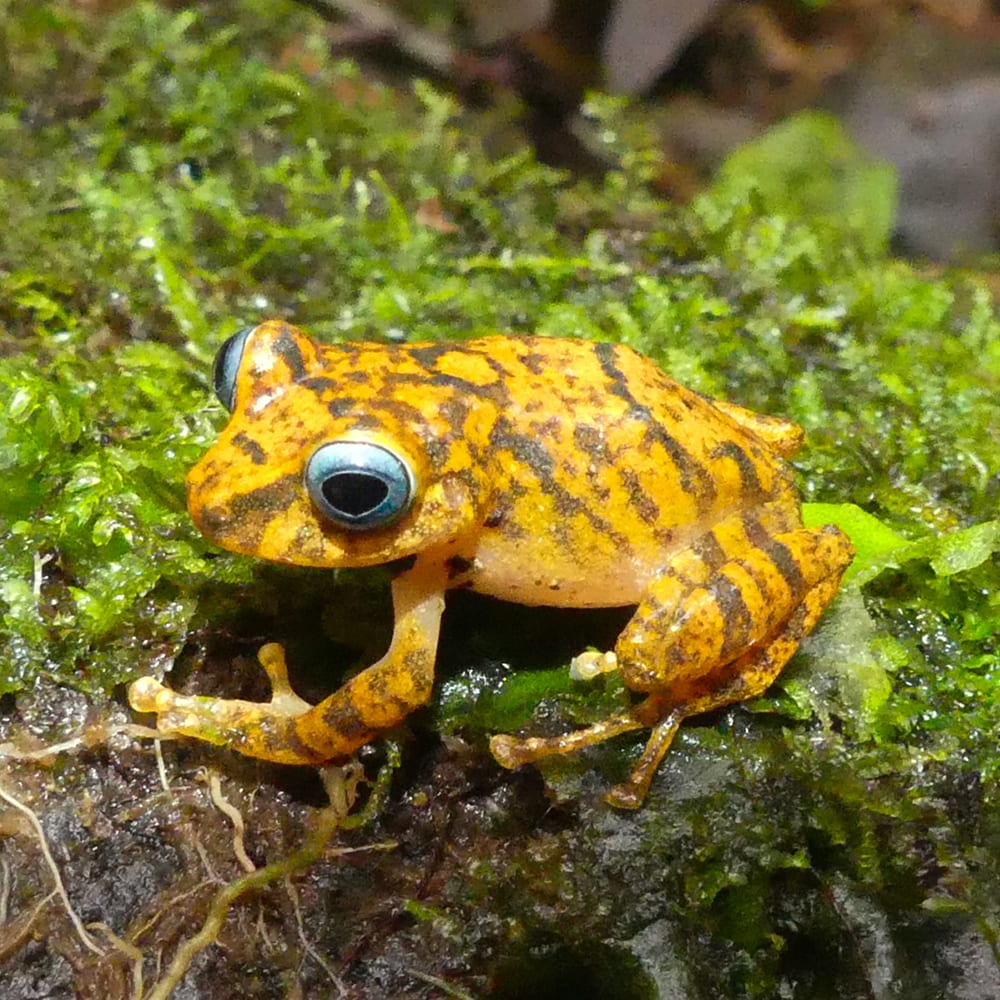
Lot 1: Frog

Ecuador
Taxon: Frog | Genus: Pristimantis
Have you ever seen a frog with soulful blue eyes? This rain frog’s unusual eyes shine against its bright and shiny yellow and brown skin. Its distinctive call — coupled with those baby blues — caught the attention of researchers one year ago in an Ecuadorean rainforest.
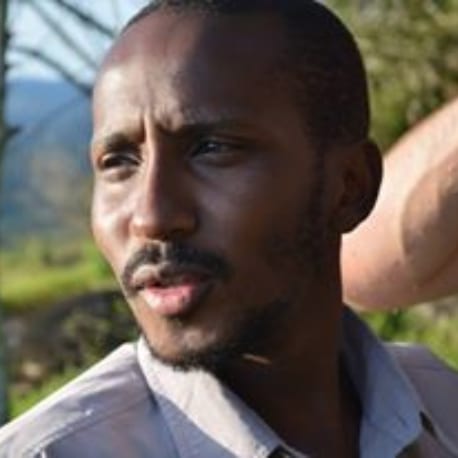
Paul Gacheru

KENYA, NATURE KENYA - EAST AFRICA NATURAL HISTORY SOCIETY
Paul Gacheru is based in Kenya, working as a program manager in Nature Kenya - East Africa Natural History Society. His background is in wildlife conservation and management. His work involves reducing habitat pressure through science-led intervention to mitigate species extinction. One project that he leads is to save a critically endangered and endemic species of bird called the Taita Apalis (Apalis fuscigularis), one of the rarest birds in the world. Through land purchase funded by Rainforest Trust, the creation of conservation reserves and forest restoration helps to halt population decline of this important species.

Paul Gacheru

KENYA, NATURE KENYA
Paul Gacheru is based in Kenya, working as a program manager in Nature Kenya - East Africa Natural History Society. His background is in wildlife conservation and management. His work involves reducing habitat pressure through science-led intervention to mitigate species extinction. One project that he leads is to save a critically endangered and endemic species of bird called the Taita Apalis (Apalis fuscigularis), one of the rarest birds in the world. Through land purchase funded by Rainforest Trust, the creation of conservation reserves and forest restoration helps to halt population decline of this important species.
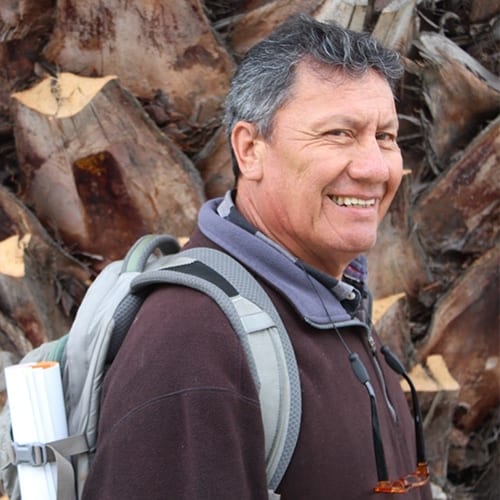
Hector Yela

ECUADOR, FUNDACIÓN ECOMINGA
DRACULA RESERVE PROJECT
Hector Yela and his wife Norma are pillars of the community of Chical, Ecuador. He has been president of the local government, supervised the project that brought electricity to the region, and supervised the feasibility study for one of the major roads connecting communities in the region. His wife is a much-loved schoolteacher who taught most of the younger members of the community. Their daughter Pamela was fascinated by the local orchids, and began to accompany Hector in his field work so that she could see them. Through her, Hector also became fascinated by orchids. Pamela was killed in a transit accident at the age of fifteen, and since then Hector has had a special relationship with orchids as bridges to the memory of his lost daughter. Hector developed friendships with many Ecuadorian and international orchid scientists, and helped uncover the region's extraordinary concentration of endemic plant species. He himself discovered several new species. When Fundacion EcoMinga established a reserve in his area specifically to protect these endemic orchids, he took a leading role in helping with land selection and negotiation, and he is now pleased to be the main protector of these forests.

José Luis Manzano Loza

MEXICO, PRONATURA NORESTE
José is a Senior Wildlife Technician from Ciudad Victoria, Tamaulipas. He has worked in the study and conservation of endangered parrot species since 1990. His experience has been developed in species of the genus Amazona, the Guacamaya Verde and the Eastern parrot. He is currently a field technician for the Parrots in Danger of Extinction project in Mexico, in charge of the monitoring and training of the guards in three sites in the south of Tamaulipas.
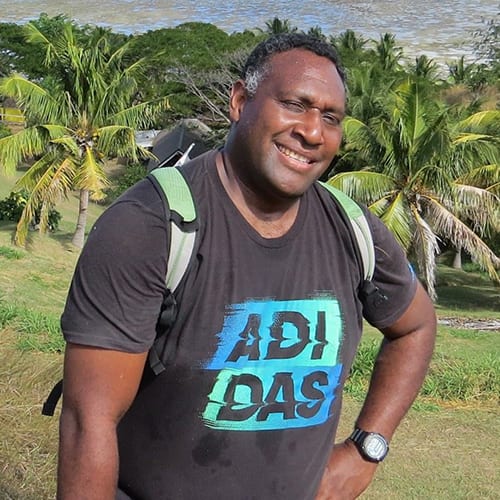
Jone Niukula

FIJI, NATIONAL TRUST OF FIJI
Jone Niukula has been working for the National Trust of Fiji since 2002. In the past, he has managed natural heritage sites such as the Sigatoka Sand Dunes National Park, Yadua Taba Wildlife Sanctuary and endangered species conservation programs for the endemic Fiji Petrel (sea bird) and Fijian native iguanas. During this time, Jone has also been involved in running invasive species removal programs on islands of critically endangered iguana populations.

Théo Dumoulin

NEW CALEDONIA, DAYU BIIK
Théo is one of the technical agents of the association Dayu Biik. They take care of the management of the Mont Panié reserve, the highest point in New Caledonia and a biodiversity hotspot. They fight for the preservation of the services that the cloud forest of the Panié massif provides them but especially for the protection of the Kaori tree of Mount Panié (Dayu Biik in a local language), a micro-endemic species and important cultural symbol. He is a field agent for the RFT reserve extension project. His job is to consult local people around this project, diagnose the state of health of forests and rivers, and monitor invasive species and their associated threats on the Panié massif.

Lot 2: Orchid

Colombia
Taxon: Orchid | Genus: Lepanthes
This new-to-science orchid boasts flame-like orange and rose-colored petals, a deep reddish-purple interior and simple green leaves with tiny white dots. A biologist and a self-taught botanist discovered the new species in a Colombian cloud forest during a research expedition.
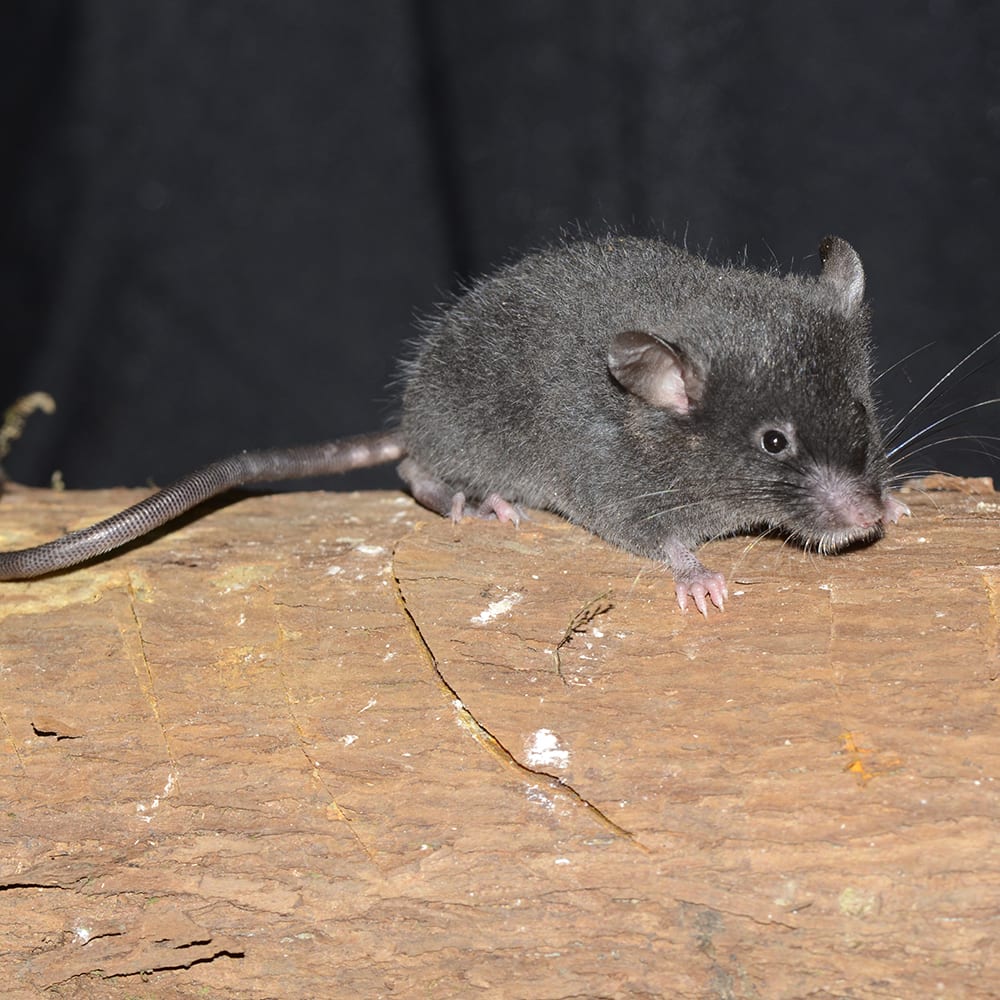
Lot 3: Forest Mouse

Ecuador
Taxon: Forest Mouse | Genus: Chilomys
A new forest mouse species is the only mammal featured in this auction! The small mouse is from a genus of rodents that live only in the rainforest and are more known to indigenous Andean peoples than modern science. This adorable species sports soft grey fur, rounded ears, long whiskers and tiny feet.
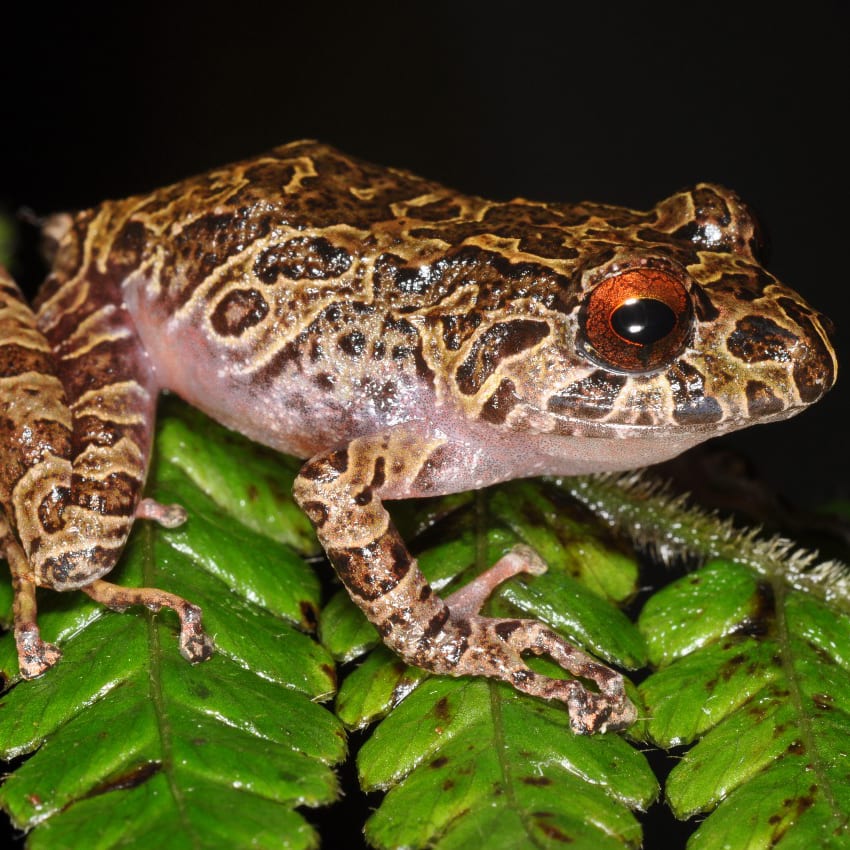
Lot 4: Frog

Colombia
Taxon: Frog | Genus: Pristimantis
This rare rain frog is not your average toad! As long as its habitat is preserved, this small but mighty frog will have no trouble finding mates in the Colombian rainforest with its loud chirping call and unusual leopard-like coloration. Researchers first discovered this species on an expedition taken just months ago.
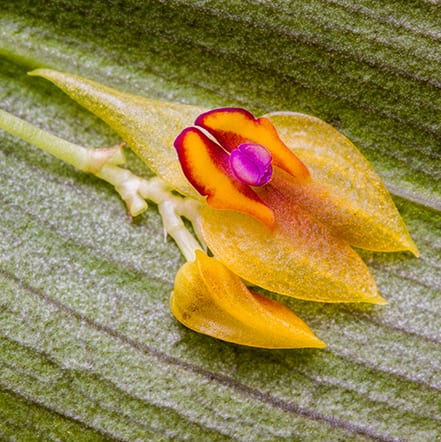
Lot 5: Orchid

Colombia
Taxon: Orchid | Genus: Lepanthes
This orchid is a ray of sunshine from a Colombian cloud forest! The centerpiece of the flower looks like two slices of a peach framing a bright magenta column with yellow petals and subdued green leaves provide a subtle backdrop. The two foremost Colombian orchid experts on the Lepanthes genus confirmed this plant has never been recorded.
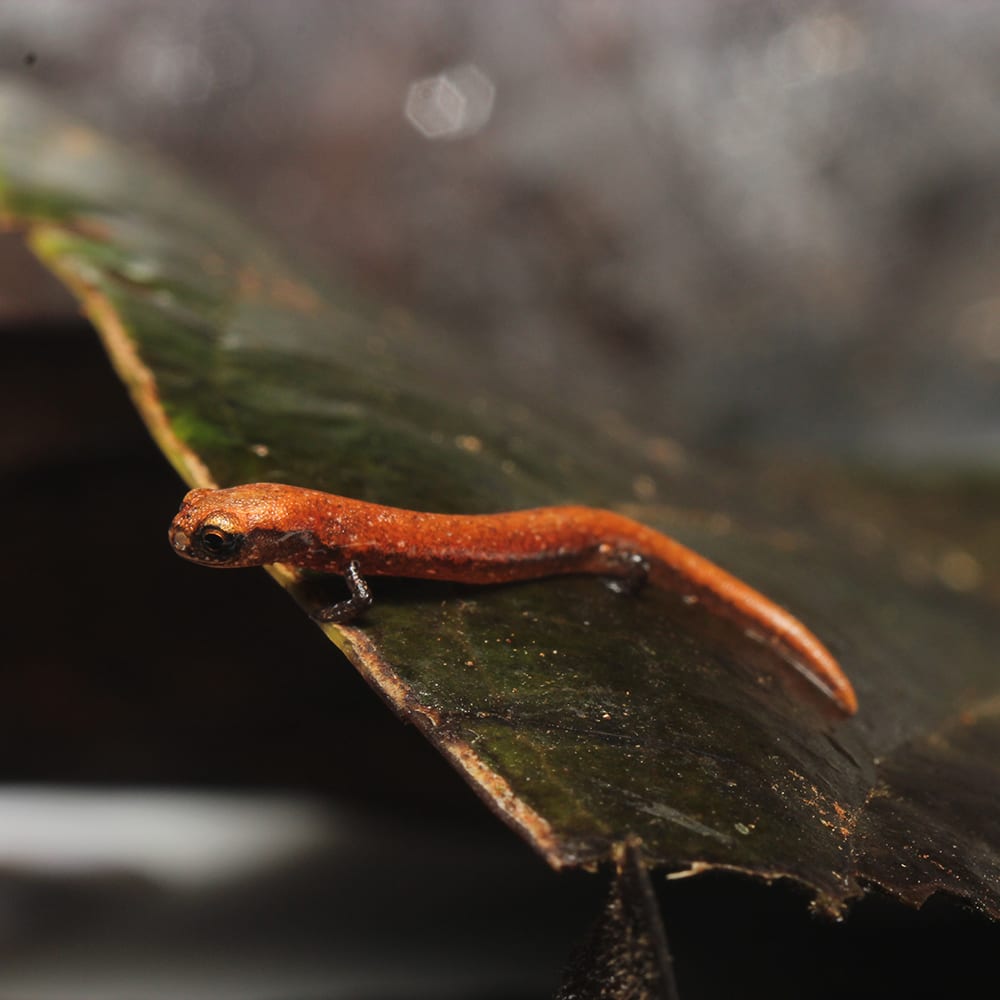
Lot 6: Salamander

Panama
Taxon: Salamander | Genus: Oedipina
Check out the tiny legs on this beautiful salamander! This climber uses those small limbs to cling to surfaces in the Panamanian rainforest. The salamander is born reddish-orange with huge eyes that become more proportional with growth. Over its lifespan, the body color subsides to a deep brown with silver accents.
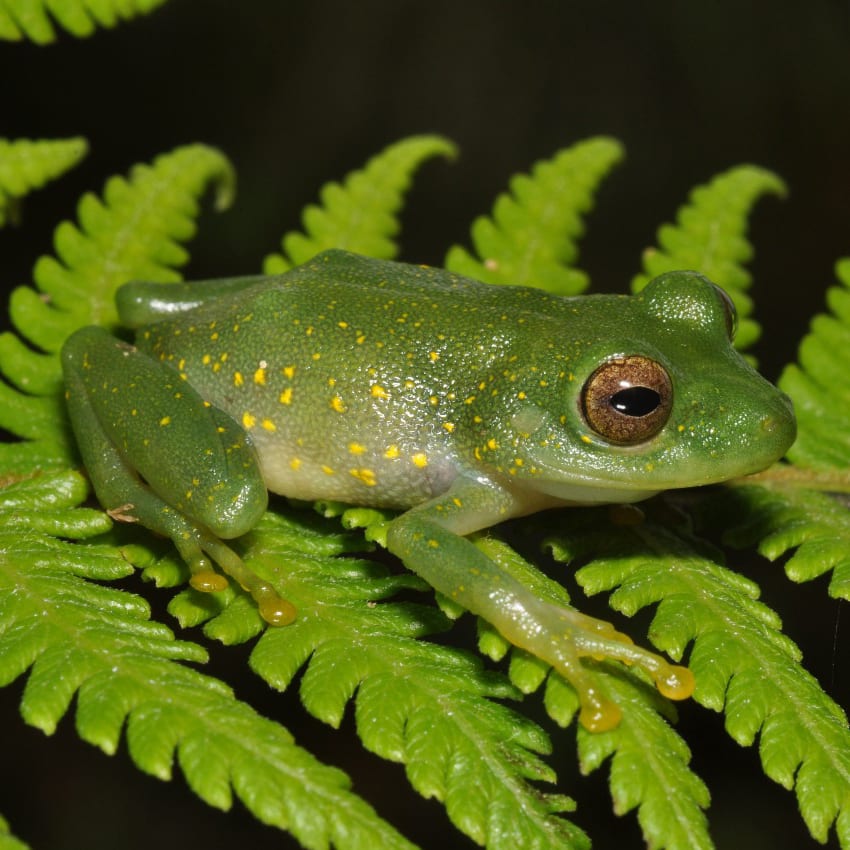
Lot 7: Frog

Colombia
Taxon: Frog | Genus: Pristimantis
This bright green, yellow-speckled frog is bound to be popular on the auction block! Despite what other frogs might say, this beautiful creature would probably say it’s easy being green when you’re this pretty. Its specialized feet have suction-like cups that help it grip to slippery surfaces in the Colombian rainforest.
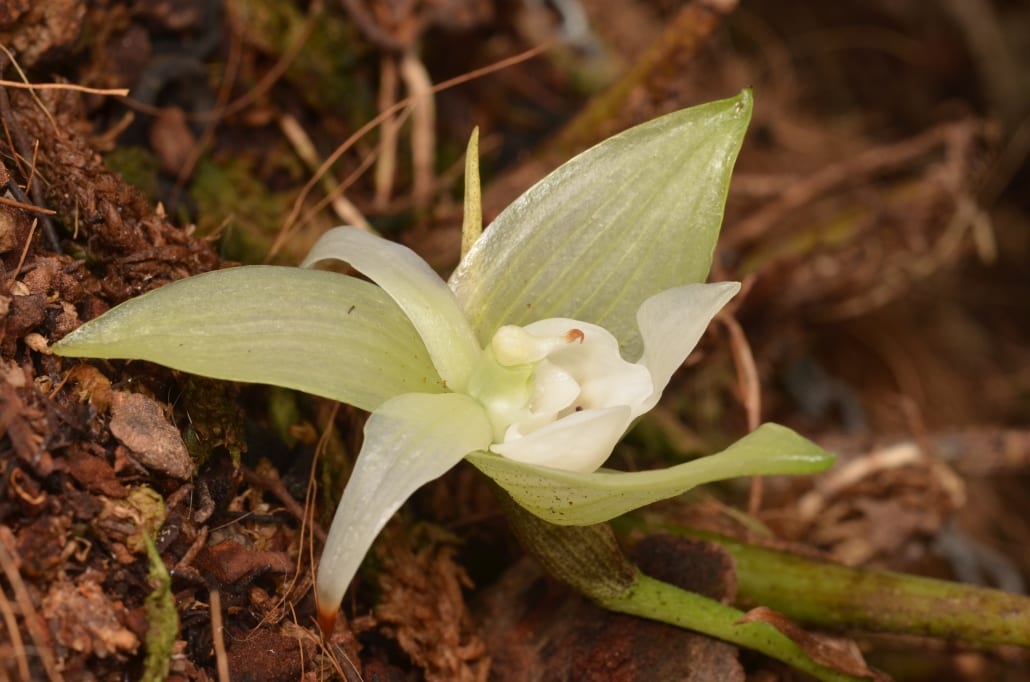
Lot 8: Orchid

Ecuador
Taxon: Orchid | Genus: Trevoria
This unique Ecuadorean orchid was discovered by accident! Scientists collected a specimen thinking it was a known species. But when it bloomed in the botanical center, they realized it was new-to-science! The flower has a subtle yellow interior with soft lime-yellow petals and emits an unexpected, olive oil-like odor.
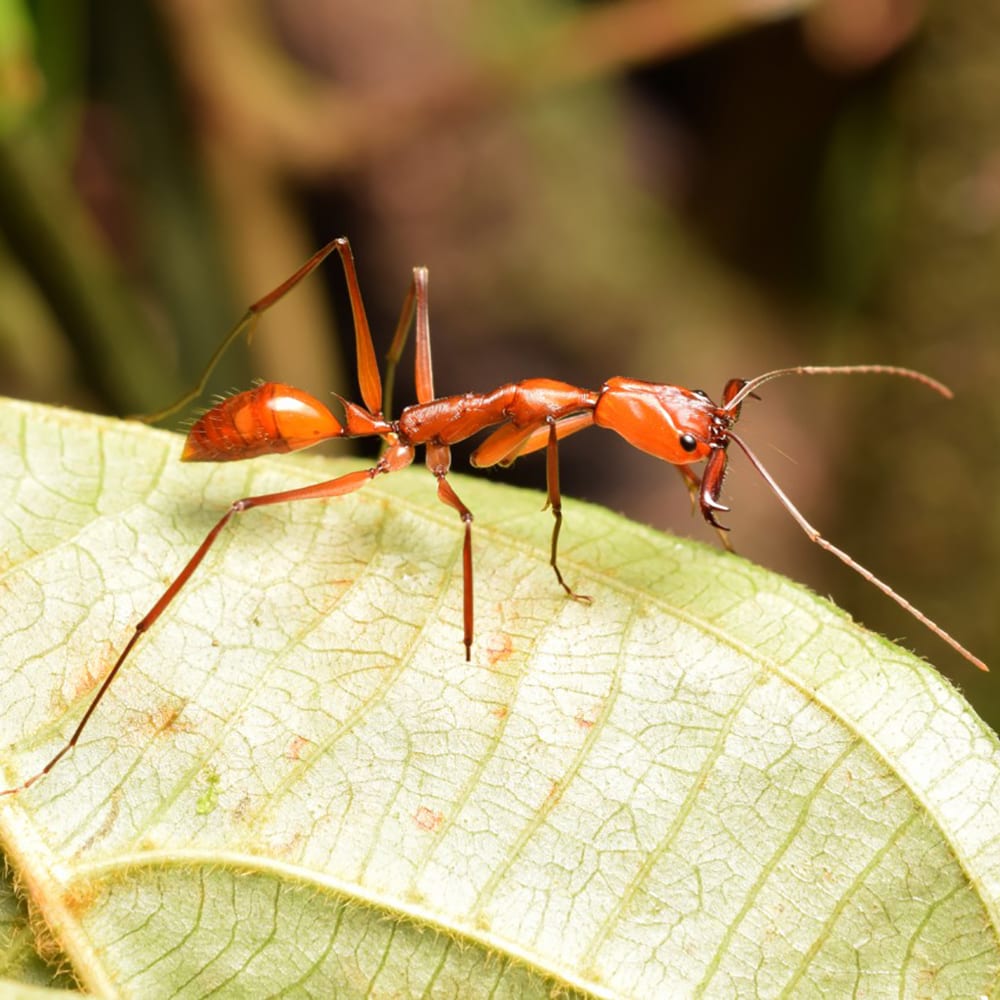
Lot 9: Ant

Ecuador
Taxon: Ant | Genus: Odontomachus
This amazing ant one of the largest of its kind in the New World! Its spring-loaded mandible opens 180 degrees and snaps shut at some of the fastest speeds ever recorded for animal movement. The trap-jaw can act as a catapult to fling the ant through the air when danger is near. But this acrobatic power isn’t enough to escape the danger of deforestation in Ecuador, so protecting its habitat remains vital.

Lot 10: Frog

Panama
Taxon: Frog | Genus: Pristimantis
My, what big eyes this Panamanian frog has! This species stood out to researchers because of its unusual call and coloration. Its brick red skin is dotted with brighter red spots and burgundy patches. The frog’s black irises make the eyes look huge — all the better to see with in the rainforest’s shadows!

Lot 11: Orchid

Colombia
Taxon: Orchid | Genus: Lepanthes
It is not often you see a flower with green petals! The stunning orange and pink of this new orchid species stand out against the green petals that blend in with the surrounding leaves. The Colombian scientists who found this new species were surprised by their discovery, considering the area had been explored by orchid experts in previous decades.
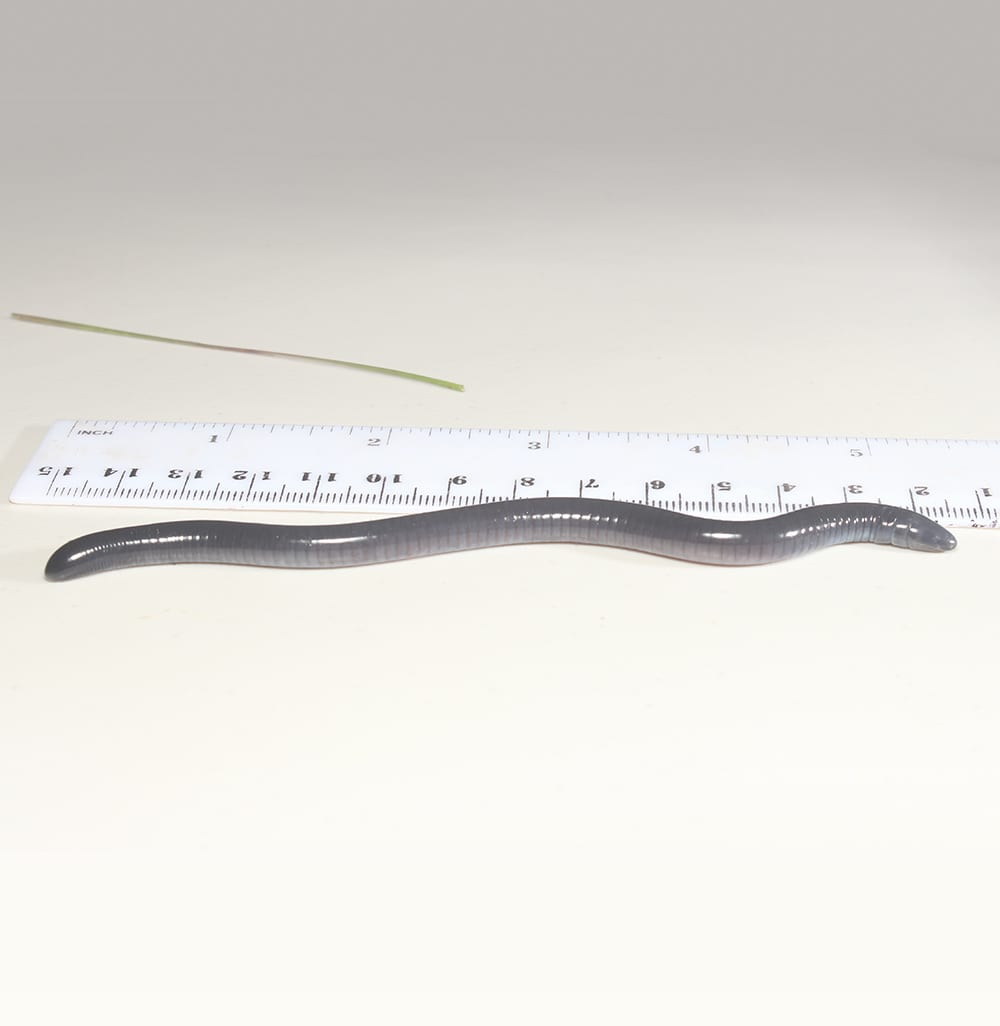
Lot 12: Caecilian

Panama
Taxon: Caecilian | Genus: Dermophis
Perhaps the most unusual species featured in this auction, this Panamanian caecilian is actually an amphibian! The worm-like creature has shiny, silvery skin and a strong, muscular head for burrowing (even if you can’t tell heads from tails). Researchers are now using DNA analysis to identify the specific lineage of this unique creature.

Steven Quarles

COUNCIL MEMBER
Mr. Quarles is a partner in the Washington, D.C. office of the law firm Nossaman LLP. He is a veteran attorney who focuses his practice on addressing issues concerning federal wildlife laws (Endangered Species Act (ESA), Migratory Bird Treaty Act (MBTA) and Bald and Golden Eagle Protection Act (BGEPA), federal lands and resources (including resource use, siting, and access law), and renewable energy. He represents a wide range of associations and companies, policy coalitions, state governments, local governments, land conservation trusts, and environmental organizations.
He served as Deputy Under Secretary in the U.S. Department of the Interior and special counsel on the U.S. Senate Committee on Energy and Natural Resources. He is active as an officer and member of the Board of several non-profit organizations. He is a graduate of Princeton University and Yale Law School.
Mr. Quarles has served on the Board of Mineral and Energy Resources of the National Academy of Sciences and on two committees of the National Research Council commissioned by Congress. He also was a member of the Secretary of the Interior’s Federal Advisory Committee on Wind Turbine Guidelines and the Secretary of Agriculture’s National Agricultural Research, Extension, Education and Economics Advisory Board. He was a participant in the Endangered Species Act at Thirty project of the University of California, Santa Barbara, Columbia University and the University of Idaho; Stanford University Forum on the Endangered Species Act and Federalism; and The Keystone Center’s Working Group on Habitat Issues.
He and his spouse own and operate one of the largest Hanoverian breeding farms in Maryland. They have ensured the protection of their 250-acre farm by donating a conservation easement to the Maryland Environmental Trust.
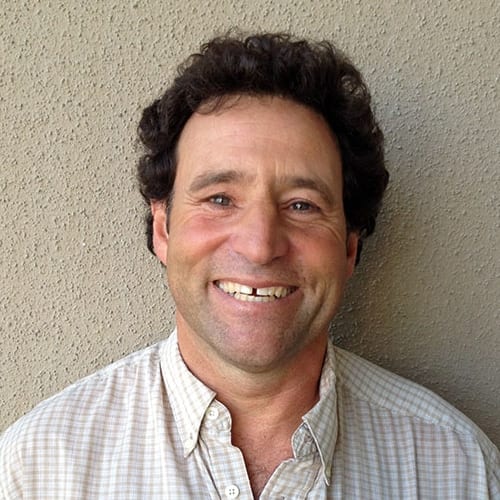
Bernie Tershy

COUNCIL MEMBER
Bernie is an Adjunct Professor in Ecology and Evolutionary Biology at the University of California Santa Cruz, where he co-directs the Coastal Conservation Action Lab. He is the Founder of Island Conservation, which has created over 900,000 hectares of new marine and island protected areas and protected over 250 seabird colonies and 250 insular endemics from extinction. Bernie is also co-founder and Board Chair of Conservation Metrics, a for-profit social venture dedicated to improving conservation through better monitoring, and co-founder of Freshwater Life, which saves endangered freshwater species by eradicating freshwater invasives. He is a member of the IUCN’s Invasive Species Specialist Group and Commission on Ecosystem Management. Bernie serves as a consultant to the Mulago Foundation’s Henry Arnhold Fellows Program, and is on the boards of OneReef, the Tony Hawk Foundation. He earned his BS in Biology from UC-Santa Cruz, an MS in Marine Sciences from San Jose State University, and a PhD in neurobiology and behavior from Cornell University.

ERIN McCRELESS

CONSERVATION SCIENCE AND MONITORING SPECIALIST
Erin McCreless is a conservation scientist with 20 years of experience working on both the biological and the socioeconomic aspects of biodiversity conservation. Her overarching goal is to use data and evidence to improve conservation science and implementation.
Since her first field experience monitoring piping plovers on Cape Cod, she has had the opportunity to work with wildlife in the Appalachian Mountains, the Aleutian Islands, Hawaii, and Palau, among other places. In her dissertation research at the University of California Santa Cruz, Erin used global datasets to investigate the costs and outcomes of protected area designations, the role of invasive mammals in driving species extinctions on islands, and the cost-effectiveness of invasive mammal eradications on islands globally. She has also worked on threatened species conservation on Australian islands, financial investments in coastal green infrastructure, and natural resource management in California’s Central Valley. At Rainforest Trust, Erin’s focus is using long-term financial, ecological, and spatial data to better understand the costs and conservation impacts of Rainforest Trust’s portfolio of protected areas.
Erin has a Ph.D. in Ecology and Evolutionary Biology from UC Santa Cruz and a BA in Biology from Yale University. She lives in beautiful Corvallis, Oregon, where she spends much of her time hiking and canoeing with her husband and dog. She also enjoys running, playing cello, and trying out local wineries.

Felicia Spector

CONSERVATION PROGRAMS OFFICER
Felicia started working professionally in animal welfare at a young age. After graduating with a degree in Biology from Union College, she spent the summer volunteering with wildlife in Port Elizabeth, South Africa before starting veterinary school. Her time in Africa opened her eyes to all of the different connections between wildlife, their habitats, and the communities that shared their home ranges, and she shifted her graduate studies to the bigger picture of conservation.
Felicia holds a Master’s degree from Columbia University in Conservation Biology, with a focus on project planning and implementation, as well as community engagement and capacity building for long-term impact. She previously worked for the Lemur Conservation Foundation in Florida, managing the welfare of a large colony of six different lemur species and collaborating on building up conservation efforts in Madagascar. Felicia also assisted the Conservation and Science Department at the Association of Zoos and Aquariums in coordinating their 500+ Species Survival Plans programs and, most recently, she was a part of the Science team at WWF developing strategic engagement events.
Felicia is excited to be at Rainforest Trust, where she can combine all of her passions working with local organizations on habitat and community level projects to safeguard the world’s most threatened species.



